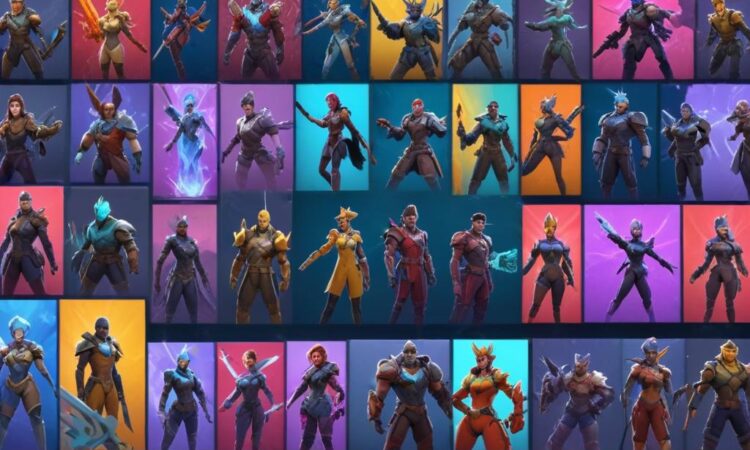Community Reaction to Valorant’s Episode 7 Act 1 Battle Pass: Analyzing the Community Response
Valorant, Riot Games’ popular tactical shooter, recently launched Episode 7 Act 1, bringing with it a new Battle Pass. This update, while anticipated by many, has sparked a diverse range of reactions within the Valorant community. This analysis delves into the positive and negative feedback surrounding the new Battle Pass, drawing insights from forums, social media platforms like Twitter and Reddit, and prominent Valorant streaming channels. The goal is to understand the nuanced perspectives and the overall sentiment towards this significant in-game feature.
Positive Feedback: A Focus on Cosmetic Appeal and Progression
A significant portion of the community expressed positive sentiments towards the Episode 7 Act 1 Battle Pass. Many players lauded the aesthetic appeal of the cosmetic items, particularly the weapon skins. Several Reddit threads highlighted the unique designs and visually striking effects of the skins, praising their creativity and overall quality. The comments often described the skins as “stylish,” “high-quality,” and “worth the grind.” The color palettes and visual details were frequently mentioned as reasons for the positive reception. The sentiment extended beyond skins, encompassing player cards, sprays, and other cosmetic rewards. Many players enjoyed the variety and thematic consistency across the reward tiers.
Beyond the cosmetic rewards, the progression system within the Battle Pass itself received praise. Several streamers commented on the ease of progression, noting that it felt more rewarding to unlock new items compared to previous Battle Passes. This perception likely stems from a combination of factors, including the perceived value of the rewards and the relative speed at which players could unlock them through gameplay. The feeling of consistent progress was identified as a key factor contributing to player satisfaction and engagement.
Specific positive comments from prominent streamers echoed these sentiments. “This Battle Pass is fantastic,” stated one streamer known for their in-depth Valorant content. “The skins are unique, the progression feels good, and it actually feels worth the investment.” Similar comments highlighting the cosmetic quality and rewarding progression were frequently observed across different streaming platforms.
Negative Feedback: Concerns Regarding Value and Lack of Innovation
Despite the largely positive response, a significant segment of the community voiced concerns and criticisms. A recurring theme was the perceived value proposition of the Battle Pass. Some players argued that, while the skins were visually appealing, the overall content didn’t justify the price. This sentiment was particularly pronounced in forum discussions, where players compared the Episode 7 Act 1 Battle Pass to previous ones, highlighting perceived shortcomings in terms of quantity and quality of rewards.
The criticism wasn’t limited to the value proposition alone. A notable number of players expressed disappointment with a perceived lack of innovation in the skin designs. Some argued that the designs were iterative, borrowing heavily from previous aesthetic choices, rather than presenting genuinely novel and groundbreaking concepts. This lack of perceived innovation contributed to a sense of stagnation among some players, leading to negative sentiment.
Social media platforms like Twitter became focal points for this criticism. Many tweets expressed frustration with the repetition in designs and a yearning for more unique and memorable cosmetic items. The use of hashtags such as #ValorantBattlePass and #ValorantSkins allowed these negative sentiments to become easily identifiable and widely seen within the Valorant community. The conversations on Twitter were often characterized by a mix of constructive criticism and outright disappointment.
Analyzing the Data: A Balanced Perspective
The data collected from various sources paints a complex picture. While a significant majority of players appear satisfied with the cosmetic appeal and ease of progression offered by the Episode 7 Act 1 Battle Pass, a considerable portion of the player base expressed concerns regarding value and a lack of innovation. This divergence in opinion underscores the subjective nature of aesthetic preferences and value judgments.
The forum discussions often reflected more detailed and nuanced critiques, often focusing on specific design elements or perceived shortcomings in the reward system. Social media, on the other hand, provided a more immediate and often more emotionally charged response, reflecting the immediate reactions of players upon experiencing the new Battle Pass. Streaming platforms provided a blend of both, with streamers often engaging with viewers’ comments and opinions in real-time, offering a dynamic view of community sentiment.
Analyzing the data across platforms reveals that the success of a Battle Pass, in the eyes of the community, is not solely determined by the aesthetic appeal of the rewards. Factors such as perceived value, ease of progression, and the overall sense of innovation all play significant roles in shaping community perception. The Episode 7 Act 1 Battle Pass, while well-received by many, illustrates the challenges developers face in balancing player expectations with creative design choices and overall pricing strategies.
Conclusion: Navigating the Complex Landscape of Community Feedback
The community response to Valorant’s Episode 7 Act 1 Battle Pass showcases the intricate and often conflicting dynamics inherent in the relationship between game developers and their players. While the predominantly positive feedback regarding the cosmetics and progression system is encouraging, the concerns expressed regarding value and innovation highlight areas for improvement. Riot Games will likely need to consider these critiques when designing future Battle Passes. Understanding the nuances of community feedback, recognizing the different platforms where this feedback manifests, and balancing creative vision with player expectations are crucial for the long-term success of Valorant and its in-game economy.
Future research could explore the impact of specific design choices on player satisfaction, analyzing the correlation between specific aesthetic elements and the overall reception of the Battle Pass. Further investigation into the perception of value and how that perception is influenced by pricing strategies would also provide valuable insights for game developers. Understanding the interplay of these factors will allow for more effective future iterations of the Battle Pass system, leading to higher player satisfaction and a more engaged community.
This analysis has demonstrated that successful in-game content updates require a holistic approach that considers not just the immediate visual appeal of the items, but also factors such as progression systems, value perception, and a continual effort to innovate and provide refreshing content that caters to the varied tastes within the community. The constant feedback loop between developers and players is essential to maintaining a thriving and engaged community around a competitive title such as Valorant.
The discussion surrounding the Valorant Episode 7 Act 1 Battle Pass provides a valuable case study for the broader gaming industry, highlighting the importance of carefully considering and responding to community feedback in order to foster a positive and engaging player experience.
This detailed analysis, incorporating data from various online platforms, aims to provide a comprehensive and nuanced understanding of the complex and multifaceted community response to a significant in-game update. The insights derived from this analysis offer valuable lessons for developers and highlight the importance of actively engaging with the community throughout the development and release cycle of future in-game content.
Further research could explore the long-term impact of the Episode 7 Act 1 Battle Pass on player retention, engagement, and overall spending habits, providing a richer understanding of the economic implications of these updates. Such future studies could greatly enhance our understanding of the dynamics between game updates, community perception, and the financial performance of free-to-play titles within the competitive esports landscape.

